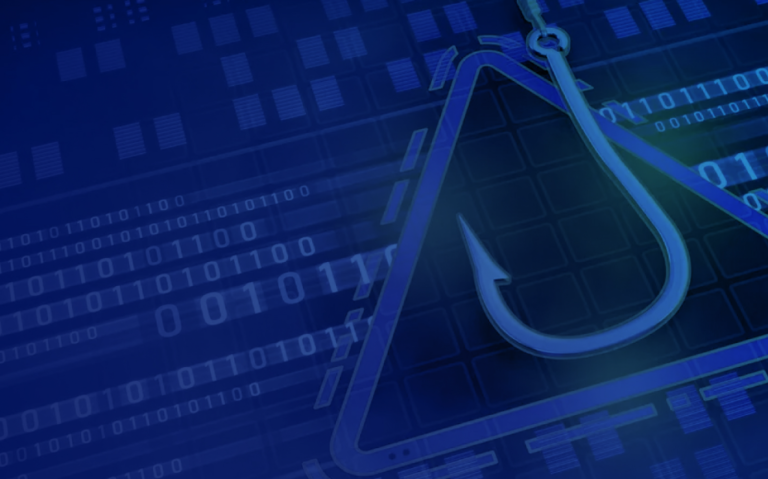In today’s digital age, phishing attacks have become one of the most prevalent threats in the cybersecurity landscape. As we move into 2024, the tactics used by cybercriminals are becoming increasingly sophisticated, making it crucial for individuals and businesses alike to stay ahead of these malicious attempts. Phishing attacks exploit human psychology to steal sensitive information such as passwords, credit card numbers, and other personal details. In this guide, we will explore in-depth strategies to prevent phishing attacks, understand the tactics used by attackers, and ensure your digital safety in 2024.
1. Understanding Phishing Attacks
Phishing attacks are deceptive attempts to obtain sensitive information by disguising as a trustworthy entity in electronic communications. These attacks can occur through various channels such as email, text messages, and even phone calls.
1.1 Types of Phishing Attacks
- Email Phishing: This is the most common form of phishing, where attackers send fraudulent emails that appear to come from legitimate sources. These emails often contain links to fake websites that mimic real ones, tricking victims into entering their credentials.
- Spear Phishing: Unlike general phishing attempts, spear phishing targets specific individuals or organizations. The attacker customizes the phishing message based on information gathered about the victim, making it more convincing and harder to detect.
- Whaling: Whaling is a type of spear phishing that targets high-profile individuals within an organization, such as CEOs or CFOs. The attackers aim to steal sensitive information or authorize large financial transactions.
- Smishing and Vishing: Smishing refers to phishing attacks conducted via SMS (text messages), while vishing involves voice calls. Both methods are used to trick victims into revealing personal information.
- Clone Phishing: In clone phishing, the attacker creates a near-perfect replica of a legitimate email that the victim has previously received. The only difference is that the link or attachment has been replaced with a malicious one.
1.2 The Evolution of Phishing Attacks
Over the years, phishing techniques have evolved significantly. In the early days, phishing emails were often poorly crafted, with noticeable grammar and spelling errors. However, modern phishing attempts are highly sophisticated, often indistinguishable from legitimate communications. Attackers now use advanced social engineering tactics and even AI to craft convincing messages that can bypass traditional security measures.
2. The Psychology Behind Phishing Attacks

Phishing attacks are successful because they exploit basic human psychology. Understanding these psychological triggers can help individuals recognize and avoid falling victim to such attacks.
2.1 Exploiting Trust and Authority
Phishing attacks often impersonate trusted figures or institutions, such as banks, government agencies, or even colleagues within a company. By leveraging the authority and trust associated with these entities, attackers increase the likelihood that the victim will comply with their requests.
2.2 Creating a Sense of Urgency
Many phishing emails create a sense of urgency, pressuring the victim to act quickly. For example, an email might claim that the victim’s bank account has been compromised and needs immediate action. This tactic is designed to bypass the victim’s logical thinking and prompt them to act impulsively.
2.3 Fear of Negative Consequences
Another common tactic is to instill fear of negative consequences if the victim does not comply. For instance, an email might threaten that the victim will lose access to their account if they do not verify their identity immediately. This fear can lead to rash decisions, making the victim more likely to fall for the scam.
2.4 The Familiarity Principle
Attackers often use information gathered from social media and other public sources to make their phishing attempts more convincing. By referencing familiar names, events, or details, the attacker can create a message that feels personal and legitimate, increasing the likelihood of success.
3. Recognizing Phishing Attempts

One of the most effective ways to prevent phishing attacks is to recognize the signs of a phishing attempt. By staying vigilant and knowing what to look for, you can avoid becoming a victim.
3.1 Red Flags in Phishing Emails
- Unusual Sender Addresses: Phishing emails often come from addresses that are slightly altered versions of legitimate ones. Always check the sender’s email address carefully for any discrepancies.
- Generic Greetings: Be cautious of emails that begin with generic greetings like “Dear Customer” or “Dear User.” Legitimate companies usually address you by your name.
- Suspicious Links or Attachments: Hover over links before clicking to see where they lead. If the URL looks suspicious or unfamiliar, do not click on it. Similarly, avoid opening attachments from unknown sources.
- Spelling and Grammar Errors: Although phishing emails have become more sophisticated, some still contain spelling and grammar errors. These mistakes can be a red flag that the email is not legitimate.
- Requests for Personal Information: Legitimate companies will never ask you to provide sensitive information, such as your password or credit card details, via email.
3.2 Recognizing Phishing Websites
Phishing websites are designed to look like legitimate ones, but there are often subtle differences that can help you spot them.
- Check the URL: Always check the URL of the website. Look for “https://” at the beginning of the address, which indicates a secure connection. Also, be wary of URLs that are slightly misspelled or contain unusual characters.
- Look for Website Security Certificates: Legitimate websites often display security certificates, such as a padlock icon in the address bar. If this is missing, proceed with caution.
- Examine the Website Layout: Phishing websites may look legitimate at first glance, but there are often inconsistencies in the layout, design, or functionality. If something seems off, trust your instincts.
4. Comprehensive Strategies to Prevent Phishing Attacks

Preventing phishing attacks requires a combination of awareness, tools, and best practices. Here are the most effective strategies to protect yourself and your organization in 2024.
4.1 Employee Education and Training
One of the most effective ways to prevent phishing attacks is through regular education and training. Employees should be trained to recognize phishing attempts and know how to respond if they receive a suspicious message.
- Regular Training Sessions: Conduct regular training sessions to keep employees informed about the latest phishing tactics and how to avoid them.
- Phishing Simulations: Run phishing simulations to test employees’ awareness and reinforce best practices.
- Security Awareness Programs: Implement ongoing security awareness programs that include newsletters, posters, and online resources to keep cybersecurity top of mind.
4.2 Using Anti-Phishing Tools and Software
Technology plays a crucial role in preventing phishing attacks. Several tools and software can help detect and block phishing attempts before they reach the user.
- Email Filtering: Implement email filtering systems that can detect and block phishing emails before they reach the inbox. These systems often use machine learning algorithms to identify suspicious patterns.
- URL Scanning: Use tools that scan URLs in emails and on websites to detect potential phishing sites. These tools can block access to malicious sites and warn users of potential threats.
- Web Browser Security: Ensure that your web browser is up to date and has phishing protection features enabled. Many browsers now include built-in tools that warn users if they attempt to visit a known phishing site.
4.3 Verifying Requests and Links
Always verify the legitimacy of requests and links before taking action. This is especially important for sensitive transactions or when dealing with unfamiliar contacts.
- Double-Check Requests: If you receive a request for sensitive information or a financial transaction, double-check it by contacting the sender through a different, verified channel.
- Hover Over Links: Before clicking on a link in an email or message, hover over it to see the actual URL. If it looks suspicious, do not click on it.
- Use a Password Manager: Password managers can help you avoid phishing attacks by auto-filling your credentials only on legitimate websites. They will not fill in your information on fake sites, adding an extra layer of protection.
4.4 Implementing Multi-Factor Authentication (MFA)

Multi-Factor Authentication (MFA) adds an additional layer of security by requiring multiple forms of verification before granting access to an account. Even if a phishing attack successfully obtains a password, MFA can prevent the attacker from accessing the account.
- SMS or App-Based Codes: Implement MFA using codes sent via SMS or generated by an authentication app. This method is effective but can be vulnerable to SIM swapping attacks.
- Biometric Verification: Biometric verification, such as fingerprint or facial recognition, provides a more secure form of MFA. It is difficult for attackers to replicate biometric data.
- Hardware Tokens: Hardware tokens generate time-based codes for MFA. These devices are extremely secure as they are not connected to the internet and cannot be intercepted remotely.
Image suggestion: Illustration of different forms of Multi-Factor Authentication, including SMS codes, biometrics, and hardware tokens.
Alt text: Illustration showing various MFA methods like SMS codes, biometric scans, and hardware tokens.
5. Advanced Phishing Prevention Techniques for Organizations
For organizations, preventing phishing attacks requires a more comprehensive approach. Here are some advanced techniques that can help protect your business from phishing.
5.1 Deploying a Security Awareness Program
A security awareness program goes beyond basic training by integrating security practices into the organizational culture. This approach helps ensure that every employee is aware of the risks and knows how to respond to potential threats.
- Continuous Learning: Security threats are constantly evolving, so your security awareness program should be dynamic. Include regular updates and new training modules as new threats emerge.
- Engagement and Gamification: Make security awareness more engaging by incorporating gamification elements, such as quizzes, challenges, and rewards for employees who demonstrate good security practices.
- Executive Support: Ensure that the security awareness program has support from the highest levels of the organization. When executives lead by example, it reinforces the importance of cybersecurity.
5.2 Implementing Email Authentication Protocols
Email authentication protocols are essential for protecting your organization from email spoofing, a common technique used in phishing attacks.
- DMARC (Domain-based Message Authentication, Reporting, and Conformance): DMARC is an email authentication protocol that helps protect your domain from being used in phishing and spoofing attacks. It works by aligning SPF (Sender Policy Framework) and DKIM (DomainKeys Identified Mail) policies with the “From” address in your emails, ensuring that only legitimate senders can use your domain.
- SPF (Sender Policy Framework): SPF allows domain owners to specify which mail servers are authorized to send emails on behalf of their domain. This prevents spammers from sending emails with forged sender addresses.
- DKIM (DomainKeys Identified Mail): DKIM adds a digital signature to your emails, allowing the recipient’s mail server to verify that the email has not been altered during transit. This provides an additional layer of trust.
5.3 Leveraging AI-Powered Threat Detection
Artificial Intelligence (AI) and Machine Learning (ML) have become powerful tools in detecting and preventing phishing attacks. By analyzing large amounts of data, AI can identify patterns and anomalies that may indicate a phishing attempt.
- Behavioral Analysis: AI can monitor user behavior and detect deviations that may indicate a compromised account. For example, if a user suddenly attempts to log in from an unusual location or device, the system can trigger an alert or require additional verification.
- Real-Time Phishing Detection: AI-powered systems can scan emails, websites, and other digital content in real-time to identify phishing attempts. These systems can block malicious content before it reaches the user.
- Threat Intelligence Sharing: AI can be integrated with threat intelligence platforms to automatically update and share information about new phishing tactics, helping organizations stay ahead of the curve.
6. The Role of Zero Trust Security in Preventing Phishing
As phishing attacks become more sophisticated, traditional security models may no longer be sufficient. The Zero Trust security model is an advanced approach that assumes that threats could exist both inside and outside the network, and therefore, no entity is trusted by default.
6.1 What is Zero Trust Security?
Zero Trust is a security concept centered on the belief that organizations should not automatically trust anything inside or outside their perimeters and instead must verify anything and everything trying to connect to its systems before granting access.
6.2 Implementing Zero Trust Principles
- Least Privilege Access: Grant users the minimum level of access they need to perform their job. This limits the potential damage if an account is compromised.
- Continuous Verification: Continuously verify user identity and trustworthiness before granting access. This includes verifying device health, user credentials, and behavior.
- Micro-Segmentation: Break your network into smaller segments and apply security controls to each segment. This limits the spread of an attack if one part of the network is compromised.
6.3 How Zero Trust Helps Prevent Phishing
Zero Trust can significantly reduce the risk of phishing by ensuring that even if an attacker gains access to a network, their ability to move laterally and escalate privileges is severely restricted. Continuous monitoring and verification mean that abnormal behavior can be detected and addressed quickly.
7. Future Trends in Phishing Prevention

As we look toward the future, phishing prevention will continue to evolve. Staying ahead of emerging trends is crucial to maintaining robust cybersecurity.
7.1 AI and Machine Learning in Phishing Detection
AI and Machine Learning will play an even more significant role in phishing prevention. As these technologies advance, they will become better at detecting subtle signs of phishing, even as attackers develop new tactics.
7.2 Biometrics and Behavioral Analytics
Biometrics and behavioral analytics will become more common in authentication processes. These technologies provide a higher level of security by verifying identity based on physical characteristics or behavioral patterns, making it much harder for attackers to succeed.
7.3 Increased Regulatory Focus
Governments and regulatory bodies are expected to introduce more stringent requirements for organizations to protect against phishing and other cyber threats. Compliance with these regulations will be critical for organizations operating in regulated industries.
7.4 User-Centric Security Models
Future security models will likely focus more on the end-user, with an emphasis on making security practices more user-friendly without compromising effectiveness. This might include simplifying MFA processes or developing more intuitive ways to recognize phishing attempts.
Conclusion
Phishing attacks are a constant and evolving threat in the digital world. As we move into 2024, the importance of staying informed, vigilant, and prepared cannot be overstated. By implementing the strategies outlined in this guide, you can significantly reduce the risk of falling victim to phishing attacks. Whether you are an individual user or part of a larger organization, the key to preventing phishing lies in a combination of education, technology, and proactive security measures.
Remember, the best defense against phishing is a well-informed and cautious approach. Stay alert, stay secure, and stay ahead of the cybercriminals in 2024.

